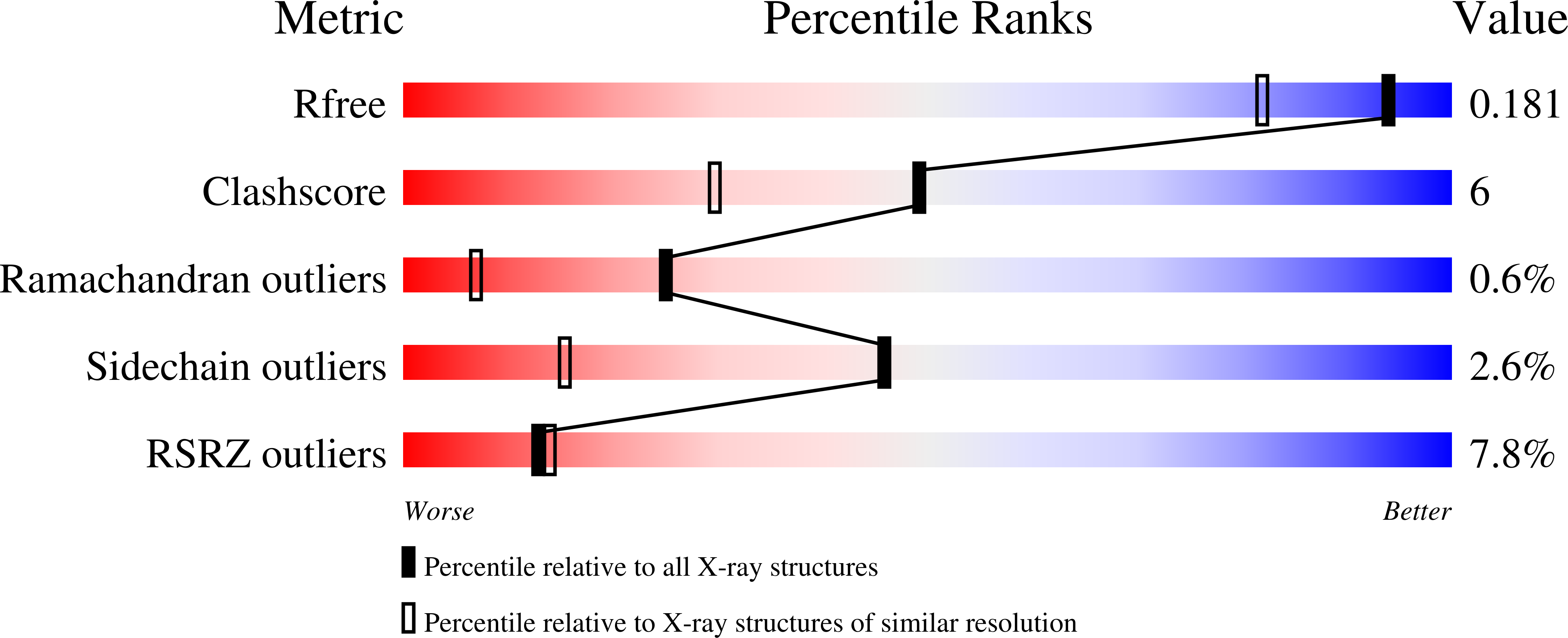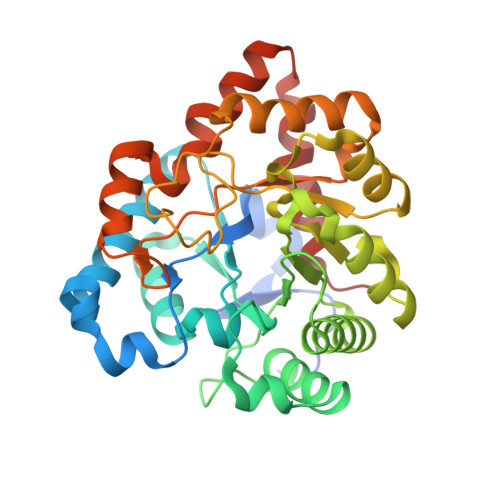Structural and Functional Analysis of a Highly Active Designed Phosphotriesterase for the Detoxification of Organophosphate Nerve Agents Reveals an Unpredicted Conformation of the Active Site Loop.
Job, L., Kohler, A., Eichinger, A., Testanera, M., Escher, B., Worek, F., Skerra, A.(2023) Biochemistry 62: 942-955
- PubMed: 36752589
- DOI: https://doi.org/10.1021/acs.biochem.2c00666
- Primary Citation of Related Structures:
7P85 - PubMed Abstract:
Neurotoxic organophosphorus compounds (OPs) pose a severe threat if misused in military conflicts or by terrorists. Administration of a hydrolytic enzyme that can decompose the circulating nerve agent into non-toxic metabolites in vivo offers a potential treatment. A promising candidate is the homo-dimeric phosphotriesterase originating from the bacterium Brevundimonas diminuta (BdPTE), which has been subject to several rational and combinatorial protein design studies. A series of engineered versions with much improved catalytic efficiencies toward medically relevant nerve agents was described, carrying up to 22 mutations per enzyme subunit. To provide a basis for further rational design, we have determined the crystal structure of the highly active variant 10-2-C3(C59V/C227V)©¤stabilized against oxidation by substitution of two unpaired Cys residues©¤in complex with a substrate analogue at 1.5 ? resolution. Unexpectedly, the long loop segment (residues 253-276) that covers the active site shows a totally new conformation, with drastic structural deviations up to 19 ?, which was neither predicted in any of the preceding protein design studies nor seen in previous crystallographic analyses of less far evolved enzyme versions. Inspired by this structural insight, additional amino acid exchanges were introduced and their effects on protein stability as well as on the catalytic efficiency toward several neurotoxic OPs were investigated. Somewhat surprisingly, our results suggest that the presently available engineered version of BdPTE, in spite of its design on the basis of partly false structural assumptions, constitutes a fairly optimized enzyme for the detoxification of relevant OP nerve agents.
Organizational Affiliation:
Lehrstuhl f¨¹r Biologische Chemie, Technische Universit?t M¨¹nchen, Emil-Erlenmeyer-Forum 5, 85354 Freising, Germany.





















